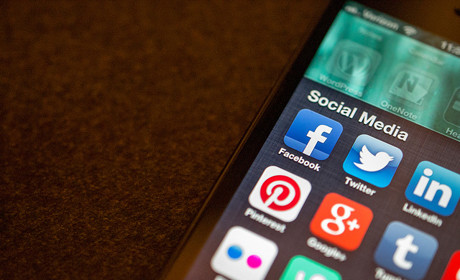
Social traffic figures are growing for many news outlets, as many readers now come to stories from social feeds rather than the more traditional route of the homepage.
But the social space is a volatile one – a tweak to one network's algorithm can make a huge difference to traffic figures for publishers, so where should media organisations look next?
Jeff Moriarty, chief digital and product officer at UK regional publishers Johnston Press, outlined six ways the company is thinking about social publishing right now, speaking at Digital Media Europe yesterday.
Facebook for volume, Twitter for engagement
As referral traffic from Facebook continues to grow for publishers, why should news outlets still spend time and resources posting on Twitter?
Moriarty recently asked a similar question when meeting with the Twitter team, and his conclusion was that Twitter users are people who "ignite the conversations around news".
"Twitter users are much more engaged with news brands," he said, so the network's place in Johnston Press' social strategy is "to get the virality started".
Tweeting is about data
"We are tweeting sort of like we used to write stories," he said, "a little bit of art."
"Where we're headed now, it is all about data, it needs to be much more of a science than an art."
Using tools that enable publishers to find out the best time to publish specific tweets, for example, is an opportunity to leverage this data.
He said tweets sent based on analytics had 91 per cent greater reach and 25 per cent better engagement than those without. "It’s machine learning in that case that you need now, it’s not about human beings crafting those beautiful tweets".
Listen
There are many tools out there that enable users to monitor social traffic and listen to the conversation, but for a long time they were geared towards brands rather than media outlets.
It was "very hard to mine the social sphere for really good news intelligence", said Moriarty. But he pointed to platforms like NewsWhip and CrowdTangle as helpful when it comes to "surveillance", and finding out which posts are outperforming or stand out to find ideas for future stories.
Experiment with new platforms
While Facebook and Twitter are at the heart of conversations about social, it's important to remember the potential of other platforms such as WhatsApp.
The Oxford Mail for example has set up a service on WhatsApp, a move Journalism.co.uk covered in detail, and Moriarty explained those who used the service were four times more engaged with messages than Twitter users.
He said WhatsApp alerts are like "poor man's notifications" – "if you think about it, it's push alerts without having to build an app."
Keep an eye out on commercial opportunities
Facebook launched local awareness ads in the US, a way for small businesses to target potential clients within a mile of their location.
Moriarty says this move "keeps us up at night as local publishers", as Johnston Press offers a digital marketing service for small and medium sized businesses called Digital Kitbag.
"[But] if we can provide that service for them in addition to our own media, we think there's a real opportunity there," he said.
"Emojis are 'thumbs up'"
With the growth of chat apps like WhatsApp and Line, emoji is becoming a language in itself.
Moriarty pointed to the emoji version of the State of the Union published by the Guardian, but that is not an isolated experiment.
The Huffington Post rose to the challenge of live-tweeting the State of the Union entirely in emoji.
Follow @HuffPostEmoji as we live tweet the #SOTU in emojis.
— Huffington Post (@HuffingtonPost) January 20, 2015
"I'm not sure that we need an entire emoji newspaper yet but there could be something to this," he said.
"This is a language that people younger than me are very fluent in so who knows where that's going to go?"
Update: The Oxford Mail is owned by Newsquest, not Johnston Press as previously stated
Free daily newsletter
If you like our news and feature articles, you can sign up to receive our free daily (Mon-Fri) email newsletter (mobile friendly).











